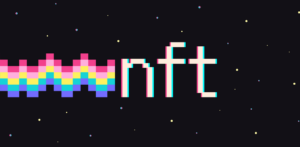How DeFi Is Revolutionizing Traditional Finance

In recent years, Decentralized Finance, commonly known as DeFi, has emerged as a transformative force within the financial sector. By leveraging blockchain technology, DeFi offers a new way of handling financial transactions that promises to disrupt traditional banking systems and financial services. This article explores the key aspects of how DeFi is revolutionizing traditional finance.
Understanding DeFi
DeFi refers to a broad category of financial applications built on blockchain networks, particularly Ethereum, that operate without centralized intermediaries like banks or financial institutions. The fundamental principles of DeFi are transparency, decentralization, and accessibility. These principles are achieved through the use of smart contracts, which are self-executing contracts with the terms directly written into code.
Key Features of DeFi
- Decentralization: Unlike traditional finance, which relies on central authorities to manage and control transactions, DeFi platforms operate on decentralized networks. This means there is no single point of failure, and the control is distributed among network participants.
- Transparency: All transactions and smart contracts on DeFi platforms are recorded on a public blockchain, providing complete transparency. Anyone can verify transactions and the code behind the smart contracts.
- Accessibility: DeFi opens up financial services to anyone with an internet connection. This inclusivity is particularly beneficial for individuals in regions with limited access to traditional banking services.
- Interoperability: DeFi platforms are designed to work together seamlessly. Users can move assets between different DeFi applications without the need for traditional banking intermediaries.
How DeFi Is Transforming Traditional Finance
- Lending and Borrowing: DeFi platforms enable peer-to-peer lending and borrowing without the need for a bank. Users can lend their assets and earn interest or borrow assets by providing collateral, all managed by smart contracts.
- Decentralized Exchanges (DEXs): Unlike centralized exchanges, DEXs allow users to trade cryptocurrencies directly with each other. This reduces the risk of hacking and provides greater control over their assets.
- Stablecoins: DeFi has popularized stablecoins, which are cryptocurrencies pegged to stable assets like the US dollar. These provide a reliable store of value and a medium of exchange within the DeFi ecosystem.
- Yield Farming and Staking: Users can earn rewards by participating in yield farming and staking on DeFi platforms. Yield farming involves providing liquidity to DeFi protocols, while staking involves locking up assets to support network operations.
- Insurance: DeFi has also introduced decentralized insurance products, which provide coverage for various risks within the DeFi ecosystem. These are managed through smart contracts, ensuring transparency and efficiency.
Challenges and Future Prospects
While DeFi holds great promise, it also faces several challenges. Security remains a major concern, as smart contracts can be vulnerable to bugs and exploits. Additionally, regulatory uncertainty poses a risk to the widespread adoption of DeFi.
However, the potential benefits of DeFi are driving continuous innovation and investment in the space. As technology improves and regulations become clearer, DeFi is poised to become an integral part of the global financial system.
DeFi is revolutionizing traditional finance by offering a more transparent, inclusive, and efficient alternative to conventional financial systems. Through the use of blockchain technology and smart contracts, DeFi is democratizing access to financial services and paving the way for a new era of financial innovation. As the DeFi ecosystem continues to evolve, it has the potential to reshape the financial landscape in ways we are only beginning to understand.





